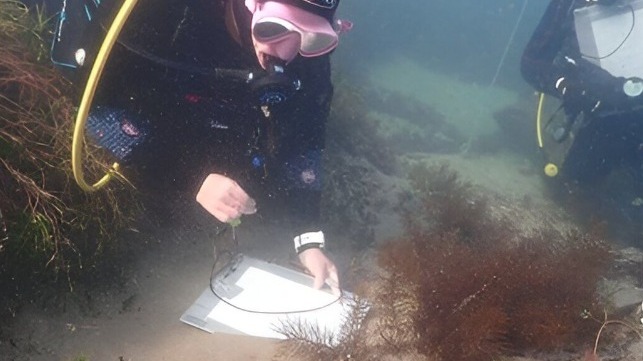Researchers Survey Australia's Earliest Known Shipwreck

A group of marine archeologists in Australia have returned to the site of an 19th century sailing ship which risks being damaged by recent seabed changes, which are uncovering the site at an alarming rate.
The Australian National Maritime Museum (ANMM) and non-profit Silentworld Foundation have returned to the site of the packet South Australian to continue survey work and secure critical evidence, which has the potential to enhance understanding of early colonization and occupation.
The sailing ship was originally a postal packet called Marquess of Salisbury, which delivered mail between England and far-flung outposts of the British Empire from 1820. It later operated as a British naval packet named HMP Swallow. It was procured by the South Australian Company, which re-named it South Australian.
The vessel was wrecked in 1837 in Encounter Bay near modern-day Victor Harbor, making it Australia's oldest known wreck. Two surveys in the 1990s failed to locate it, and it was finally rediscovered in 2018. Since then, it has continued to draw keen interest from archeologists thanks to its historical significance. The ship was designed to carry a huge amount of sail on a relatively small hull for maximum speed, and is believed to have transported approximately 80 immigrants to the new colony.
The ship’s fate came on December 8, 1837. It was loaded with whale oil and readying for departure to Hobart when it was caught in a southeasterly gale and wrecked. There were no fatalities.
ANNM says that while a sizable percentage of the surviving hull remains buried, recent seabed changes are uncovering the site at an alarming rate. This has reinforced the need for additional investigation as a matter of urgency.
However, Covid-19 travel restrictions interrupted further visits to the site for two years. Last year, archeologists returned to continue work and managed to carry out photogrammetric 3D recording and site mapping. The team also conducted a comprehensive conservation assessment to determine the wreck site’s level of preservation and suggest strategies for its continued protection.
In the current mission, work at the site has included comprehensive documentation of exposed hull components and targeted recovery of at-risk artifacts. A small selection of objects has also been mapped and recovered. The items include a gun flint, decorated ceramic fragments, ship’s fasteners, glass bottles and a whetstone used to sharpen tools.
“South Australian’s historical and archaeological significance cannot be overstated. As South Australia’s oldest recorded European shipwreck, and one of its earliest immigration vessels, it has the potential to enhance our understanding of the state’s initial colonization and occupation, including the establishment of extractive mercantile activities such as shore-based whaling and interactions between European colonists and Aboriginal people,” said James Hunter, ANMM’s Curator of Naval Heritage and Archaeology.
While weather and water visibility impeded efforts to complete 3D photogrammetric surveys of the wreck late last year, imagery from the current and prior surveys are being used to generate a digital 3D model of most of the site. The team hopes to complete the photogrammetric survey of the wreck this year.
According to South Australia's government, a total of 126 vessels are known to have been lost in the region’s inland and coastal waters, accounting for the loss of at least 28 lives and about 11,500 tonnes of cargo.
